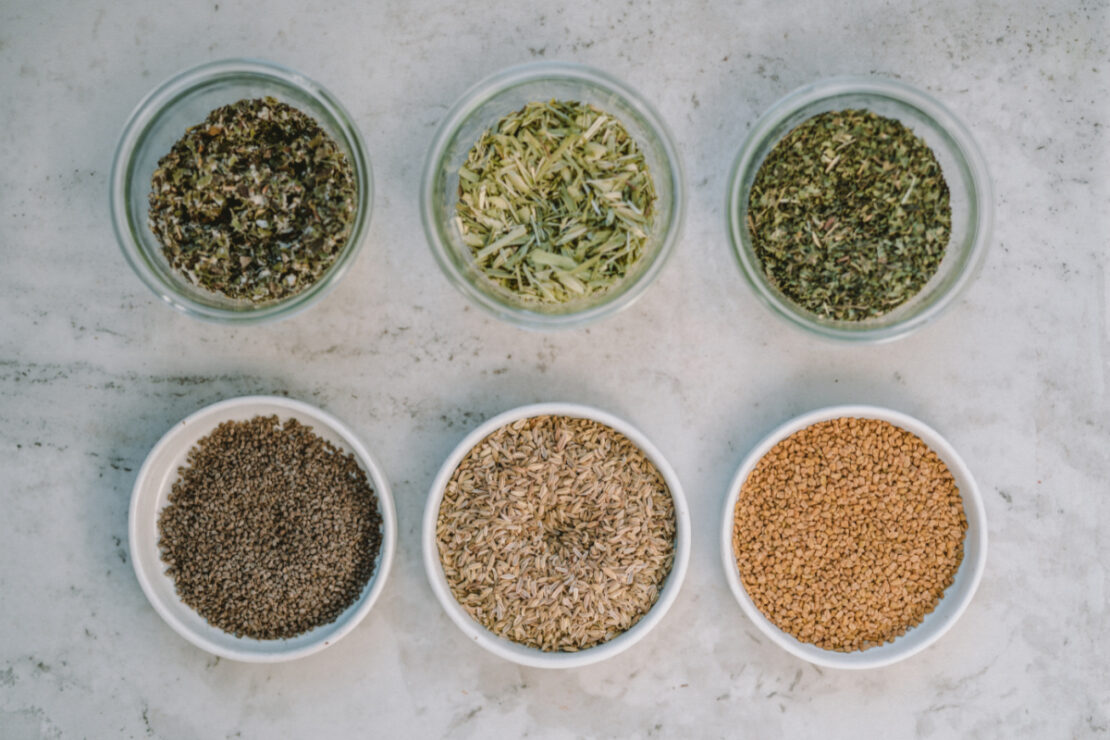
How to Make Your Own Tea Blends + a Soothing Sleep Tea Recipe
Have you ever tried an herbal tea that was so delicious you just couldn’t put it down? What about one that you couldn’t finish drinking, no matter how hard you tried, because it tasted like muddy water? The art of making herbal tea blends is a skill that takes practice, experimentation, and observation. It requires getting to know different types of herbs and their flavors so that you can intuitively predict which herbs would pair nicely together, and which ones should never be side-by-side.
Herbal tea can be an easy and fun way to incorporate herbs into your life. Being able to craft your own tea blends to address a specific health goal or satiate a personal craving can be very exciting and empowering. However, with so many different herbs out there to choose from, the options can be overwhelming! This article will be your guide to the art of herbal tea formulation so you can learn how to make your own tea blends that will not only taste amazing but will also offer great health benefits.
Choose the Purpose
Most tea blends have a specific purpose in mind, like supporting digestion, bolstering the immune system, soothing stress and anxiety, or providing a tasty, energizing herbal alternative to caffeine.
Choosing the intention of your tea blends is the first step in creating them. Once you have your desired outcome in mind, you can begin researching herbs that will help support the goal.
It may be helpful to make a list of all of the herbs that match the purpose of your tea, then think about their flavor profiles. If you’re unsure how a single herb tastes in tea form, you may want to brew a cup to taste-test so you can gain a better understanding of its characteristics. While the intended goal of the tea is very important, it is also key that the tea is tasty, otherwise, it may not be consumed. For this reason, it is good to keep both the intention and taste appeal in mind as you move forward with your brainstorming process.
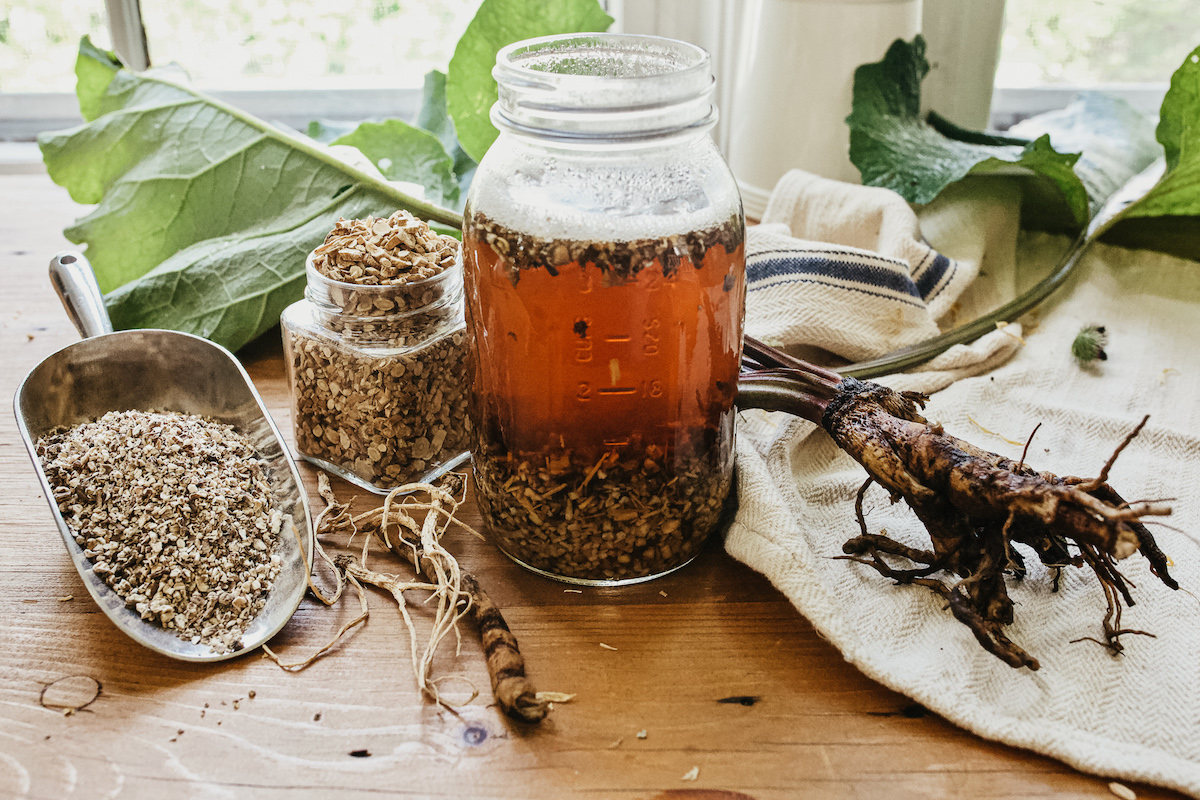
Herbal Infusion vs Decoction
Another important aspect to consider when creating tea blends is what specific part of the plant is being used and the most effective way to extract its beneficial qualities. There are two main ways to prepare herbal tea: infusion and decoction. An herbal infusion is ideal for tea blends made from the more delicate parts of a plant, such as aerial, or above-ground parts like leaves, stems, and flowers. A decoction is best for more hardy plant parts like roots, bark, seeds, or berries, as sometimes an infusion isn’t strong enough of a brew method to break through the tough exteriors of these plant parts to extract all of the plant constituents and their benefits.
Ideally, the goal is to create a tea blend with a specific preparation in mind, pairing similar plant parts together. Therefore, it generally works better to pair delicate plant materials together and hardy parts together, and not to mix the two in a blend. However, depending on your blend, sometimes mixing them is unavoidable, which is okay. If that’s the case, you can prepare the tea as an infusion with a longer steeping time to encourage constituent extraction.
There isn’t one way to make an infusion or decoction, but here are some general guidelines. Infusion and decoction times may vary based upon the herbs used and the intended strength of the tea blend.
Herbal Infusion
Steep 1 tablespoon of dried herbs in 8 fluid ounces of boiling water, cover, and let sit for 5-15 minutes. Strain and enjoy!
Herbal Decoction
Place 1 tablespoon of dried herbs in a small pot and fill with 8 fluid ounces of water. Put it on the stovetop, heat on low, and bring to a simmer. Cover with a lid (this is optional as some herbalists prefer not to cover when making decoctions) and gently simmer for 10-15 minutes, making sure that the water doesn’t boil. Strain into a tea mug and enjoy!
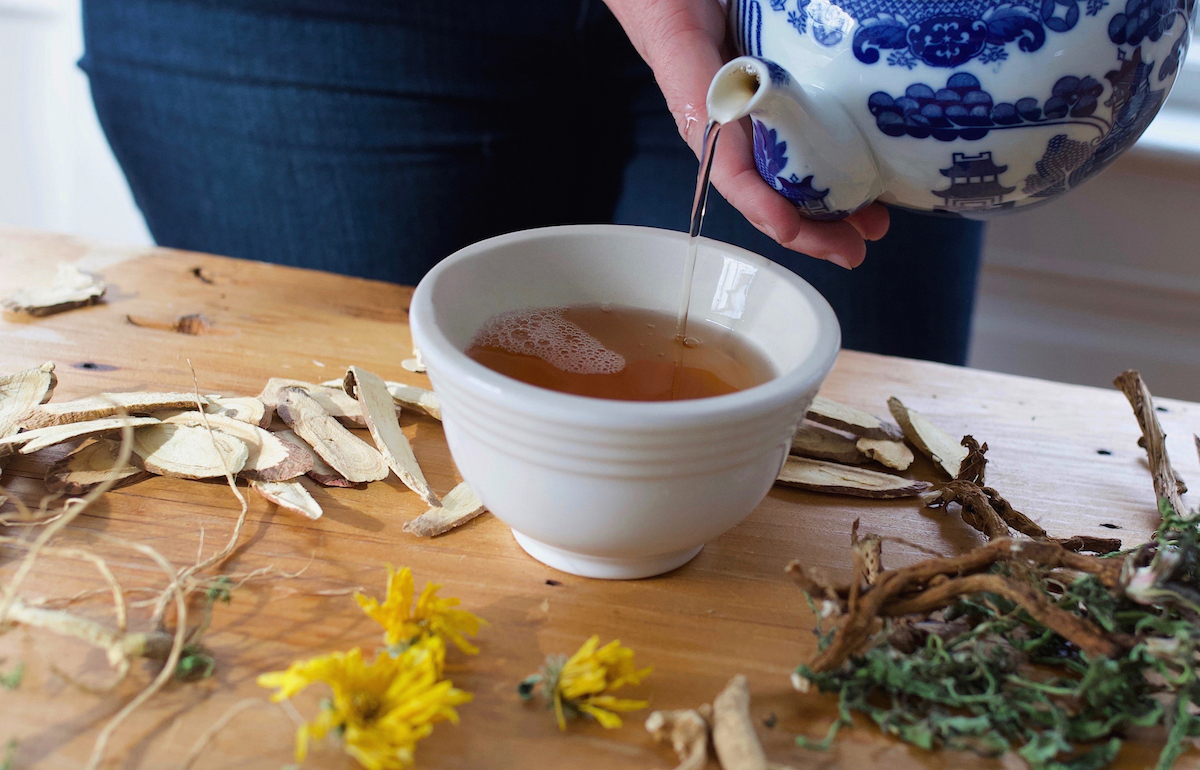
The Structure of Tea Blends
When formulating an herbal tea blend, there are three main classifications of herb types in the structure to consider: base or lead; supportive; and accent, catalyst, or synergist. Depending on the herbalist, slightly different names may be used for these roles.
Generally, you will want to aim to create a tea blend that has three parts base ingredient, one or two parts supporting ingredient, and one-quarter to one part accent ingredient (Kendle, 2018). These proportions are a good starting point, but feel free to experiment and make adjustments as needed. A good guideline is to make a single cup of your new blend, taste-test it, and then add or subtract ingredients from there. Learning how herbs taste and blend together is a skill that develops with consistent practice, experimentation, and working with the herbs themselves.
As you become more experienced with making tea blends, you may notice that the role that an herb fills may vary from one formulation to the next, and sometimes there will be multiple herbs that share a role in a blend, for example, there may be three supportive herbs or two base herbs (Kendle, 2018).
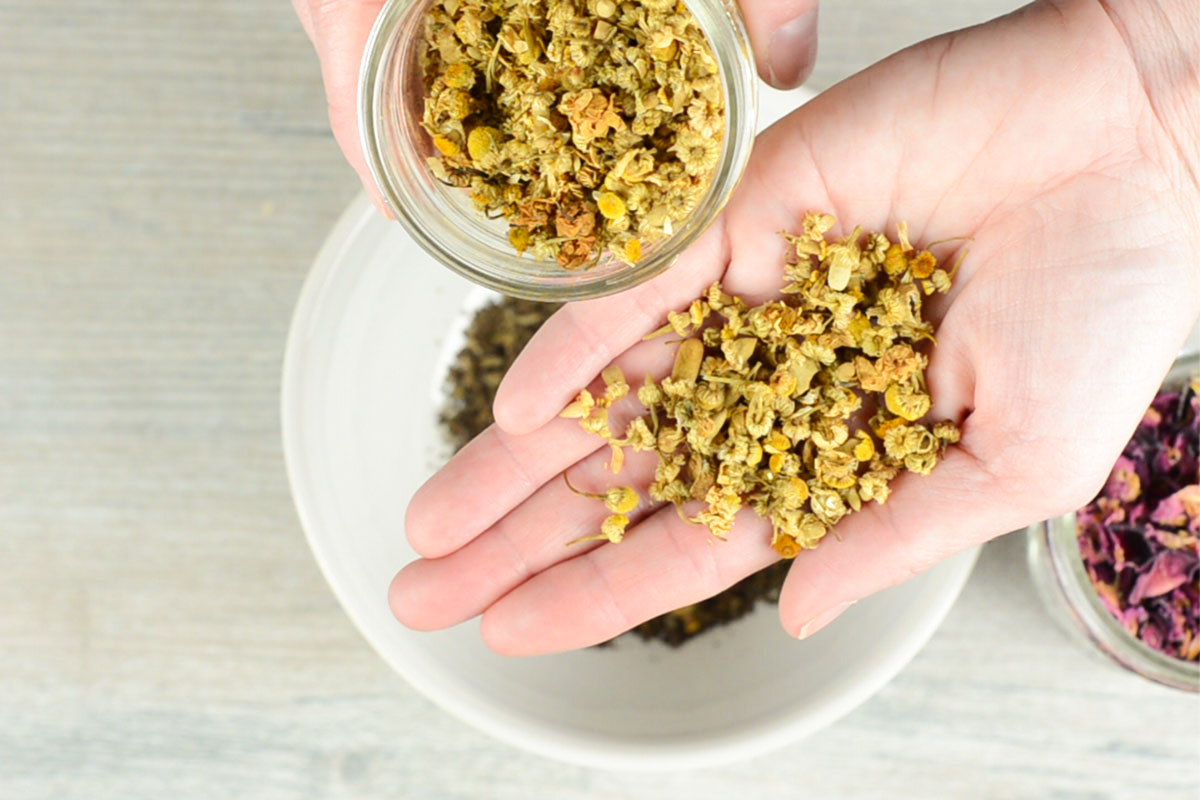
Lead or Base Herbs
The lead or base herbs should help support the main purpose of your tea blend. It will make up a majority of the formula, so it’s best to choose herbs that have a pleasant or neutral flavor profile and avoid herbs that are strong, intense, or bitter. Aim to have your base herbs take up about 40-70% of your tea blend. Some examples of appropriate base herbs include chamomile (Matricaria chamomilla), oatstraw (Avena sativa), mullein (Verbascum thapsus), and peppermint (Mentha x piperita).
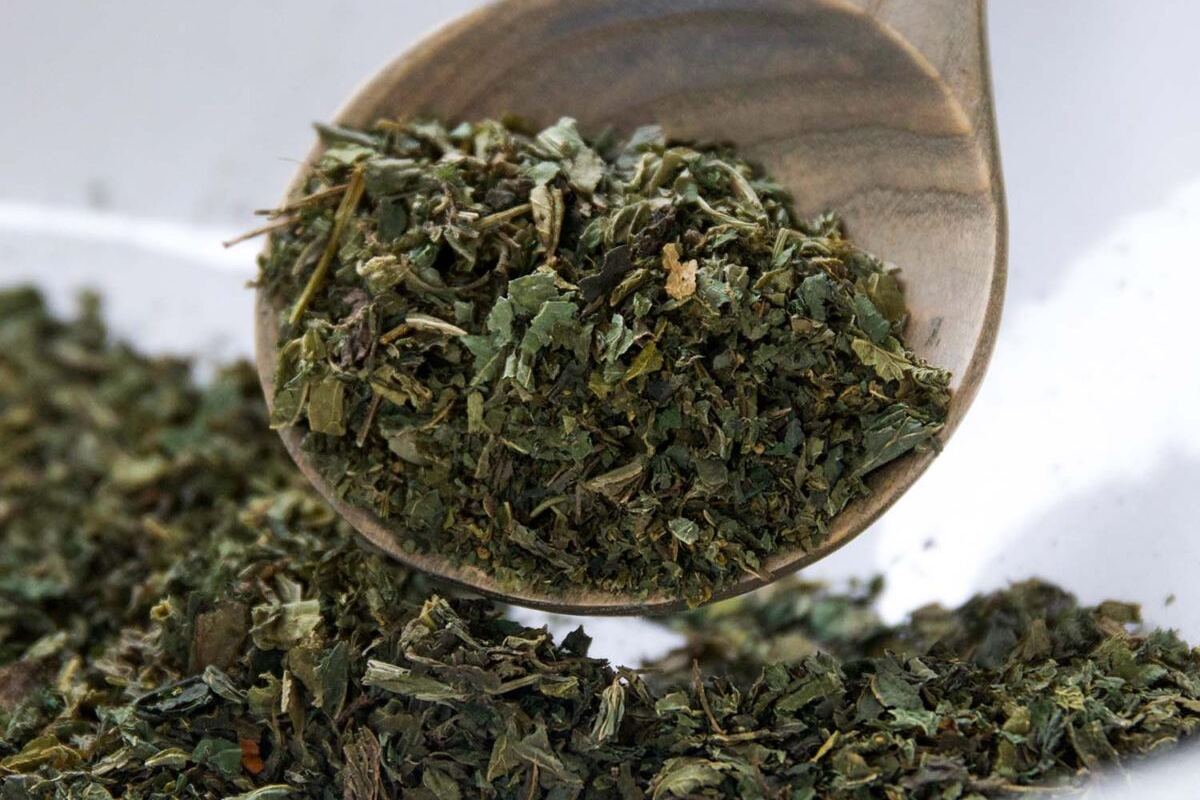
Supportive Herbs
These herbs provide support to the lead herbs by either strengthening or enhancing their properties or having a similar effect or flavor. Supportive herbal ingredients usually take up around 20-40% of a tea blend. Examples of supportive herbs are lemon balm (Melissa officinalis), skullcap (Scutellaria lateriflora), and marshmallow root (Althaea officinalis).
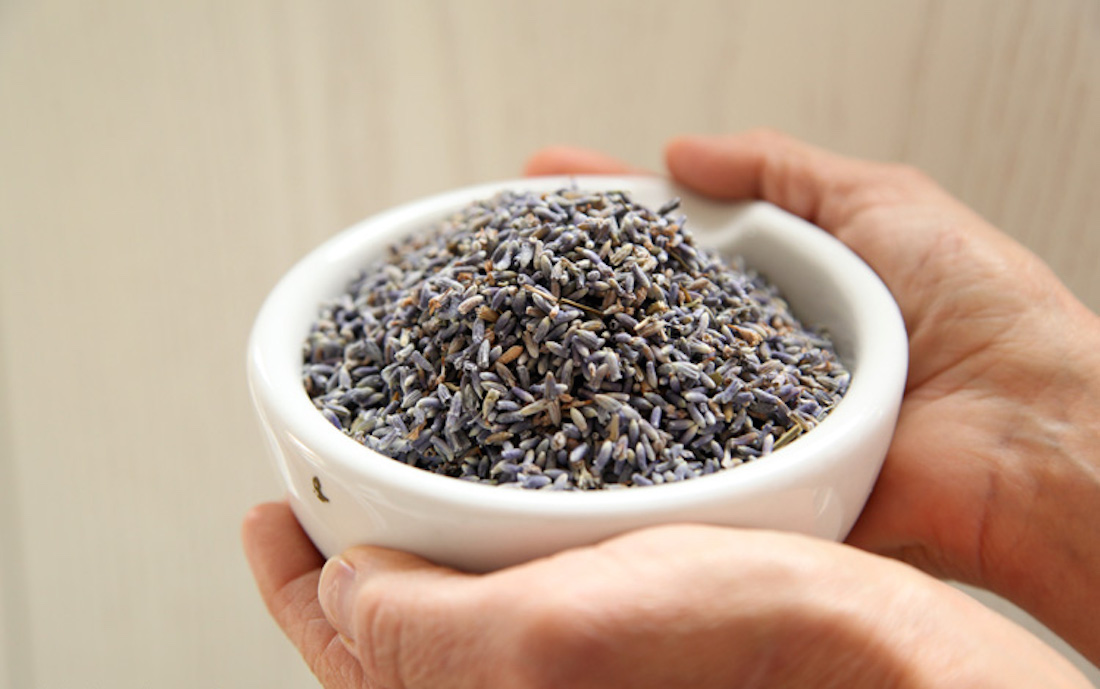
Accent, Catalyst, or Synergist Herbs
These are the ingredients that help round out the other herbs by either synergizing or harmonizing the effects and overall potency of a formula. The term synergy refers to the theory that the interaction of two or more substances produces a combined effect greater than the sum of their individual effects (Zhou et al., 2016).
Some herbs enhance each other’s effects when combined, making them more effective in a blend than on their own. According to one scientific study on colon cancer cell growth, the actions of sage and peppermint were amplified when combined, a combination that was significantly more impactful than combining sage and rosemary in terms of inhibiting the proliferation of colon cancer cells(Yi & Wetzstein, 2011). However, despite encouraging findings such as these, there is not yet enough scientific research and data on the synergistic effects of different herbs and more need to be done (Zhou et al., 2016).
Research aside, synergistic herbs can also simply harmonize a blend or add an accent to the flavor. They should make up about 10-20% of your tea blend and can have a more potent flavor profile or stronger energetic action than the other categories; these herbs embody the cliche “a little goes a long way.” Accent or synergist herb examples include lavender (Lavandula officinalis), citrus peel, sage (Salvia officinalis), cardamom (Elettaria cardamomum), and ginger (Zingiber officinale).
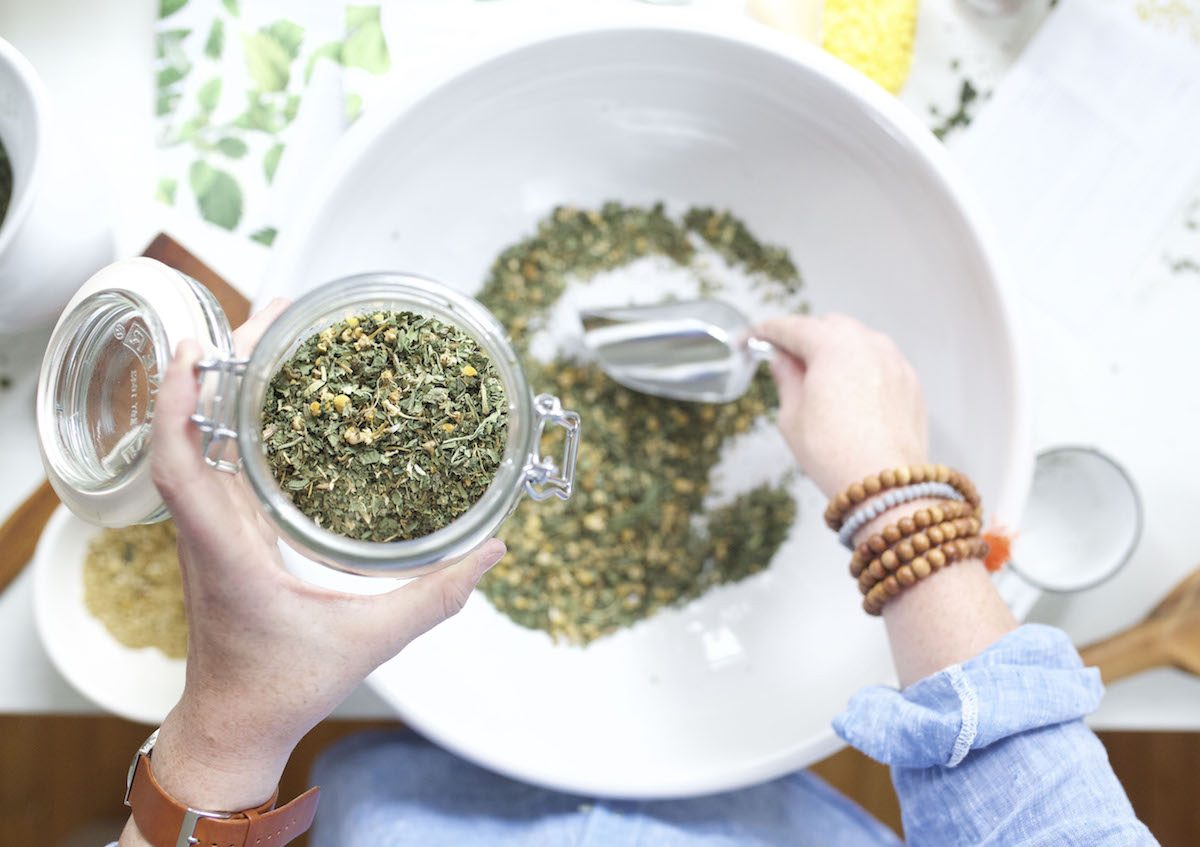
Tea Blend Sample Recipe
The purpose of this tea blend is in the name—all of the chosen ingredients are herbs that are traditionally used to help support sleep.
1 cup dried chamomile (Matricaria chamomilla) (base herb)Soothing Sleep Tea
½ cup dried lemon balm (Melissa officinalis) (supporting herb)
¼ cup dried rose (Rosa spp.) petals (synergist herb)
1 tablespoon dried lavender (Lavandula officinalis) (synergist herb)
In Closing,
This article is meant to be a guide on the basics of herbal tea formulation, but in no way is it a box by which to be confined. An herbal tea may look and taste however you wish and creating blends can be an intimate, creative way for you to connect with plants. Have fun with formulation and be sure to take notes so that you can recreate your favorite tea blends in the future!
Interested in learning more about blending your own tea mixes? Check out our Tea Blending 101 Workshop!
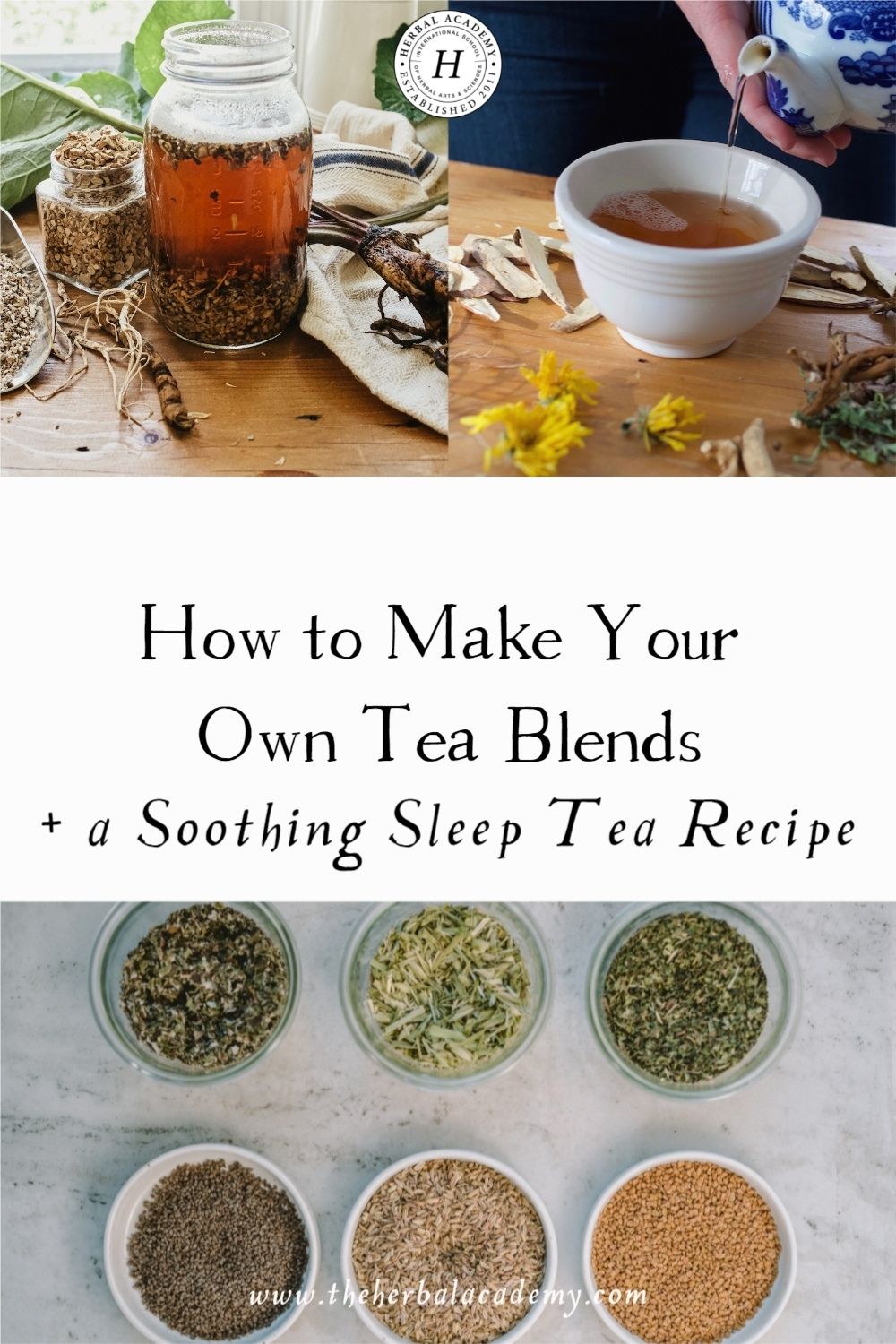
REFERENCES
Kendle. (2018). How to create your own herbal tea blends. Mountain Rose Herbs. https://blog.mountainroseherbs.com/guide-tea-blending
Yi, W. G., & Wetzstein, H. Y. (2011). Anti-tumorigenic activity of five culinary and medicinal herbs grown under greenhouse conditions and their combination effects. Journal of the Science of Food and Agriculture, 91, 1849–1854. https://doi.org/10.1002/jsfa.4394
Zhou, X., Seto, S.W., Chang, D., Kiat, H., Razmovski-Naumovski, V., Chan, K., … Bensoussan, A. (2016). Synergistic effects of Chinese herbal medicine: A comprehensive review of methodology and current research. Frontiers in Pharmacology, 7. https://doi.org/10.3389/fphar.2016.00201







